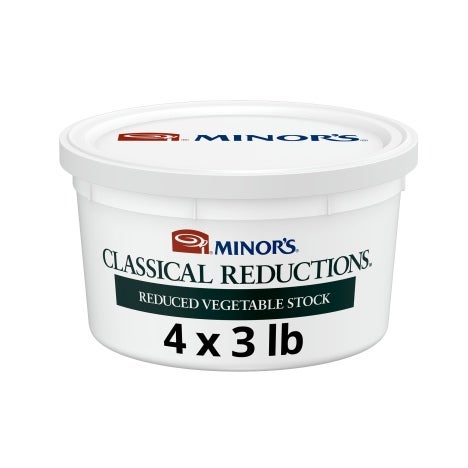
Adapt to the New Normal: Simplify Your Menu
Learn how optimizing your menu can mean savings in labor and food costs with increases in efficiency. It’s a key profit strategy for operators adjusting to the new normal.
Smaller, simpler menus have a big payoff in profitability and operational efficiency.
The menu has always been a foodservice establishment’s best marketing tool—and a roadmap to its financial viability. Now, in the post-pandemic era, engineering the menu to drive margins and enhance efficiencies is even more important.
For many operators, the shutdowns and operational reductions of the pandemic meant focusing on smaller, simpler menus to address issues of limited supply, labor shortages, and the ability to execute an item (for example, translating or removing items that worked for dining-room service, but not for takeout). As a concept of menu engineering, simplification is one of most powerful tools to build profitability moving forward.
In fact, according to the Chicago-based loyalty marketing firm Rewards Network, 28% of restaurateurs said they were making menus smaller and more efficient for the kitchen. Cost-saving changes include removing lower-margin items, using less-expensive ingredients, and including fewer meat and other premium options. Streamlined menus also help operators with cashflow, because cutting back on ingredients can help lower food costs, and they address the fact that social distancing protocols mean fewer people in kitchen.
Menu simplification has other benefits. The specific menu item selection can be modified to reduce inventory and boost SKU and prep utilization. Fewer choices mean less food waste and reduced labor due to quick prep times. Customers can find their favorites more easily, especially when ordering from a mobile device. This, in turn, leads to increased capacity, such as speeding order times at the drive-thru or allowing for faster table turn (especially important when sanitation procedures between customers are more complex).
These goals can be achieved through menu construct—layout, categorization, number and placement of items, descriptions, etc—as well as pricing. And margins can be influenced by a combination of price and promotion, or through the menu itself.
- Focus on guest favorites based on past sales performance over several months
- For takeout/delivery, revise recipes to enhance portability, hold times, and reheatability, and consider price in view of higher costs for packaging and delivery
- On the menu, showcase items that you want to sell more of through placement, highlighting a special section, or a creating a new category such as a Value Menu
- Utilize specials and LTOs (limited-time offers) to build variety and seasonality
- Pay attention to party size—as for family-style takeout—and how it affects not only the check size but also the number and mix of items ordered
- Make the menu more flexible to adapt to supply chain interruptions, price changes, and other market conditions, as well as changing consumer tastes and food trends
- Reduce or eliminate more complex menu items, both in terms of the number of ingredients and/or the labor and time involved to produce them, but be careful about removing so many items that variety or repeat business is compromised, or the brand identity is eroded
- Enhance ticket times with items that are easier to prep and serve, such as shrimp cocktail or portion-and-heat bread pudding
- Recognize that many consumers now have a greater understanding of what it takes to run a restaurant and may be more tolerant of necessary price increases
- Evaluate pricing in terms of margin—the amount of profit recouped—rather than food cost; a $30 steak may have a 65% food cost, but it generates more profit ($10.50) than a $12 sandwich with a 35% food cost ($7.80)
- That said, when reducing menu size or eliminating items, take a hard look at those with higher food costs or lower profit margins, or try tweaking the recipe or portion size to deliver better performance
- Consider pricing strategies that allow for increases to be taken in smaller increments, rather than in one sticker-shock-inducing swoop
- Always remember the fundamentals: Menu simplification requires a total team focus on fundamentals to execute well every time
The information provided is based on a general industry overview, and is not specific to your business operation. Each business is unique and decisions related to your business should be made after consultation with appropriate experts.





